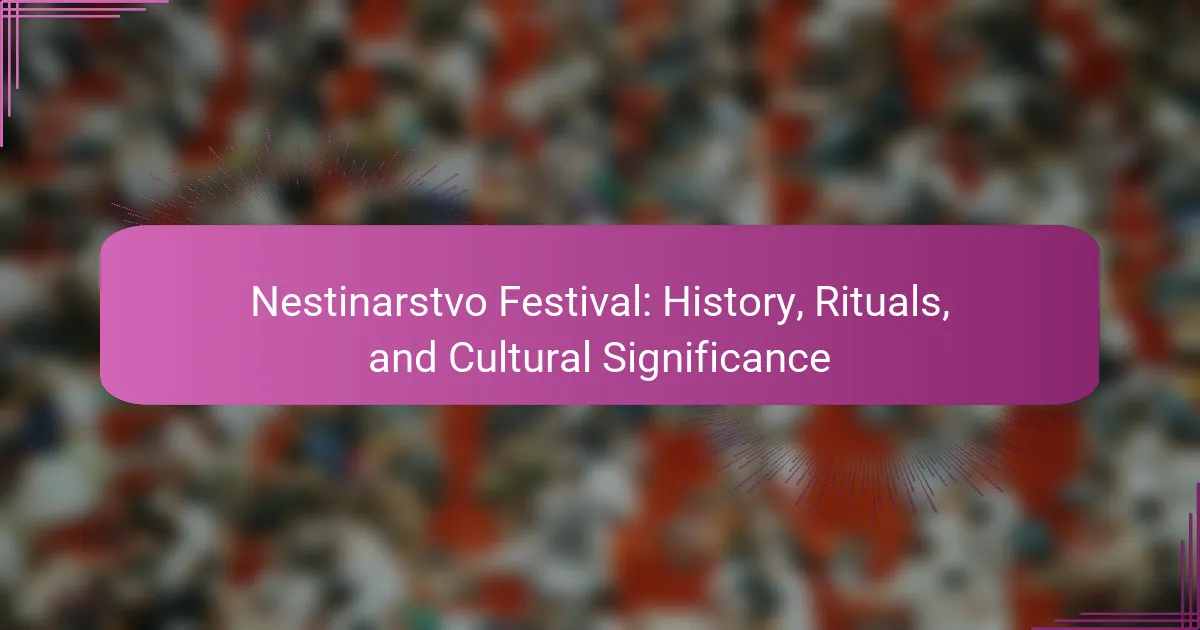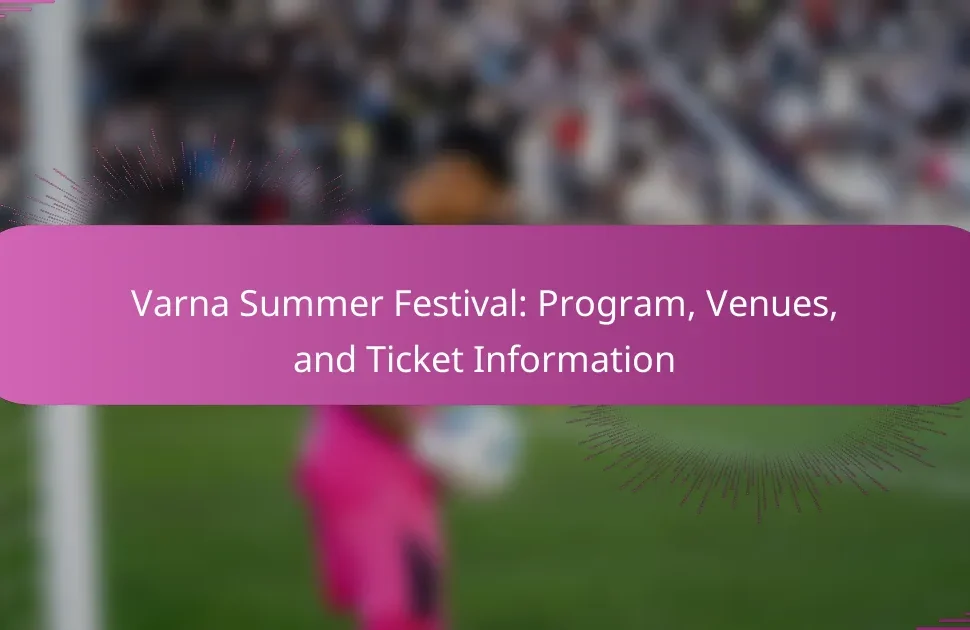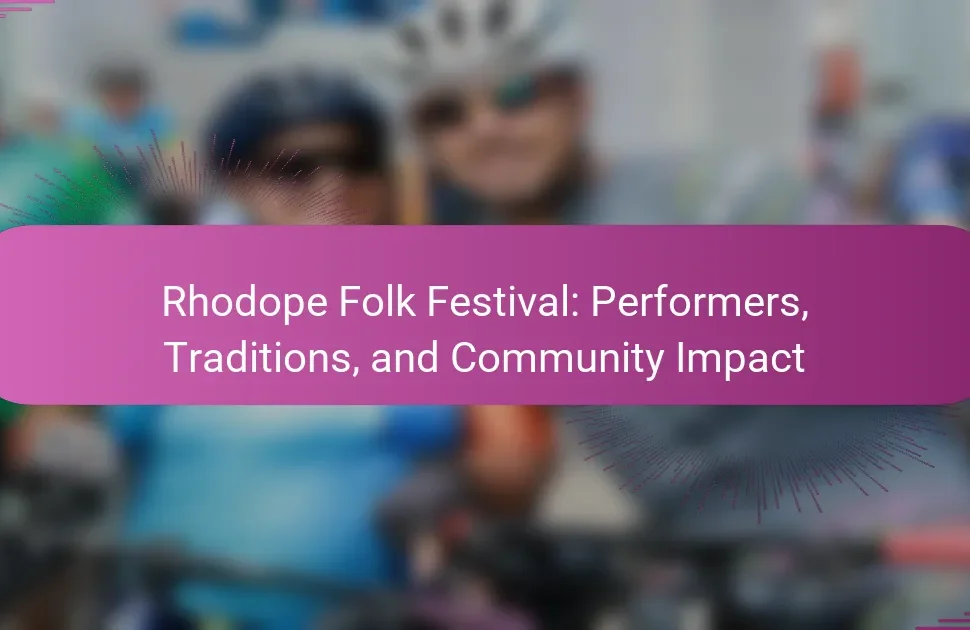The Nestinarstvo Festival is a vibrant celebration rooted in ancient Thracian traditions, blending pagan and Christian elements. It features fire-dancing rituals, animal sacrifices, and communal festivities that honor saints and ancestors. This festival holds significant cultural importance, showcasing the community’s identity and heritage while facing challenges in preservation and modernization. Recognized by UNESCO, it emphasizes the need to safeguard these unique practices for future generations.

What are the origins of the Nestinarstvo Festival?
The Nestinarstvo Festival originates from ancient Thracian traditions, particularly in Bulgaria. It features fire-dancing rituals that honor saints, combining pagan and Christian elements. The festival’s roots trace back to the belief in healing and protection through fire, symbolizing purification and spiritual connection. This unique cultural practice has been recognized by UNESCO for its significance in preserving intangible heritage.
How has the festival evolved over the years?
The Nestinarstvo Festival has evolved significantly, blending ancient traditions with modern influences. Initially rooted in pagan rituals, it now incorporates elements of Christianity and community celebrations. Over the years, the festival has expanded in scope, attracting tourists and promoting cultural heritage. The introduction of organized performances and workshops has enriched the experience, while preserving the unique fire-walking ritual. Today, it serves as a vibrant expression of local identity and continuity in cultural practices.
Which historical events influenced its development?
The Nestinarstvo Festival evolved through various historical events, particularly influenced by ancient Thracian rituals and the adoption of Christianity in the region.
Key events include the Thracian worship of fire and the sun, which laid the spiritual foundation for the festival. The integration of Christian practices during the Byzantine period transformed the festival, blending pagan rituals with Christian symbolism.
Additionally, the Ottoman Empire’s rule brought cultural exchanges that further shaped the festival’s unique attributes. The revival of Nestinarstvo in the 20th century highlighted its cultural significance, as communities sought to preserve their heritage amidst modernization.
These historical influences collectively contribute to the festival’s rich tapestry of rituals and cultural importance, highlighting its role in community identity and spiritual expression.
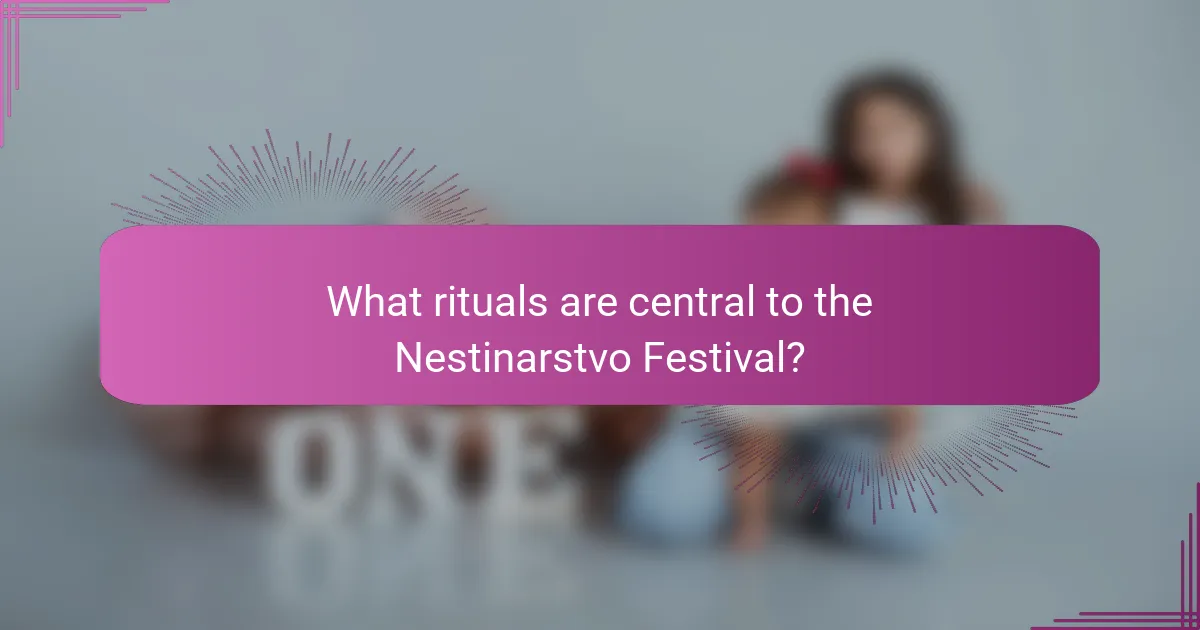
What rituals are central to the Nestinarstvo Festival?
The Nestinarstvo Festival features rituals such as fire dancing, animal sacrifices, and processions. These practices honor the spirits and connect participants to their ancestors. Fire dancing is central, where dancers walk barefoot over hot coals, embodying spiritual purification and protection. The festival also includes music, traditional costumes, and communal feasting, enhancing cultural cohesion.
How do fire-walking ceremonies take place?
Fire-walking ceremonies during the Nestinarstvo Festival involve participants walking barefoot across hot embers. The ritual is rooted in ancient traditions and combines elements of dance, music, and spiritual beliefs.
Typically, the event begins with a procession where dancers, known as Nestinari, perform traditional dances while being guided by a spiritual leader. The atmosphere is charged with music from live instruments, enhancing the trance-like state of the participants.
As the ceremony progresses, the embers are prepared, often heated to extreme temperatures. Participants mentally prepare themselves through prayers and chants, invoking protection and strength. Finally, they walk across the glowing coals, a demonstration of faith and resilience, believed to cleanse them of sins and bring blessings.
This unique cultural practice highlights the community’s connection to their ancestors and the significance of fire as a purifying element.
What roles do music and dance play in the rituals?
Music and dance are central to the Nestinarstvo Festival, embodying spiritual expression and communal identity. They facilitate connection between participants and the divine, enhancing the ritual’s significance. The rhythmic movements and melodies evoke trance states, enabling participants to experience transcendent moments. Traditional songs and dances reflect the cultural heritage, reinforcing community bonds and shared history. These elements are vital in preserving the uniqueness of the Nestinarstvo rituals, allowing them to thrive across generations.
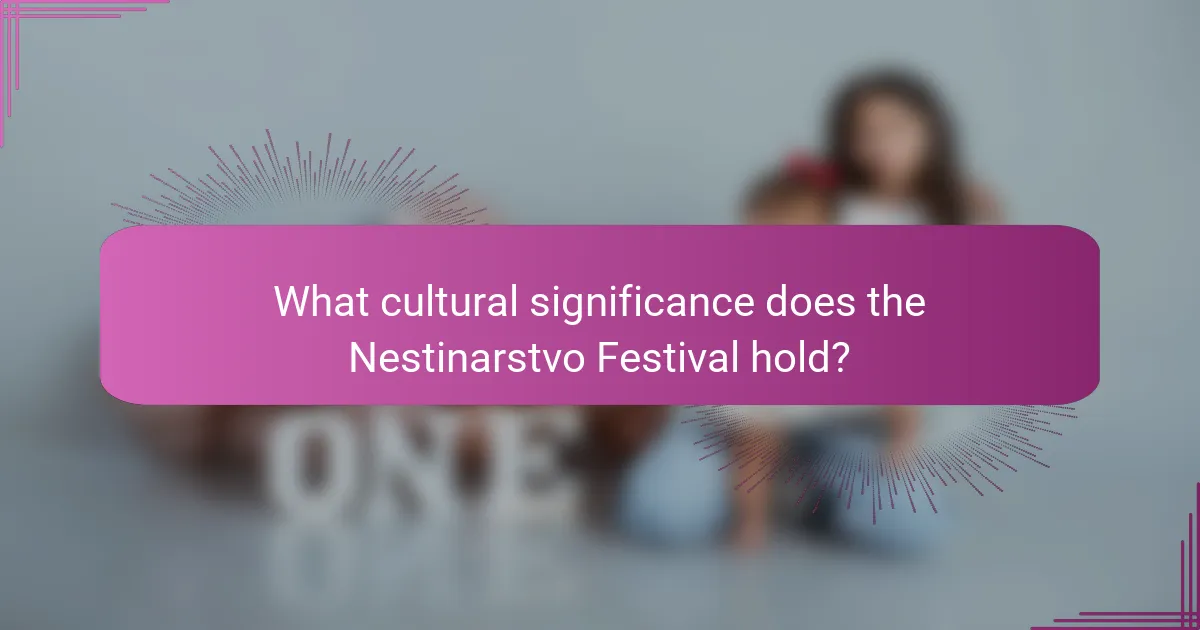
What cultural significance does the Nestinarstvo Festival hold?
The Nestinarstvo Festival holds deep cultural significance as it preserves ancient traditions and rituals unique to the Thracian region. This festival showcases fire-dancing rituals, symbolizing a connection between the spiritual and physical worlds. The event reflects the community’s identity, reinforcing social bonds and cultural heritage. Nestinarstvo is recognized by UNESCO as an Intangible Cultural Heritage of Humanity, highlighting its importance in safeguarding traditional practices.
Why is the festival important to local communities?
The Nestinarstvo Festival is crucial for local communities as it preserves cultural identity and strengthens social bonds. It fosters a sense of belonging, connecting generations through shared traditions. The festival also attracts tourism, boosting the local economy. Additionally, it promotes the unique heritage of fire dancing, a rare attribute that distinguishes this event from others. Celebrating these rituals enhances community pride and encourages the transmission of folklore.
How does it reflect the region’s cultural identity?
The Nestinarstvo Festival reflects the region’s cultural identity through its ancient rituals, music, and dance, showcasing a blend of pagan and Christian traditions. This unique event highlights community bonds and local history, emphasizing the significance of fire walking as a spiritual practice. The festival is a living testament to the area’s folklore, preserving customs and beliefs passed down through generations. Additionally, it attracts visitors, fostering cultural exchange and economic growth while reinforcing local pride.
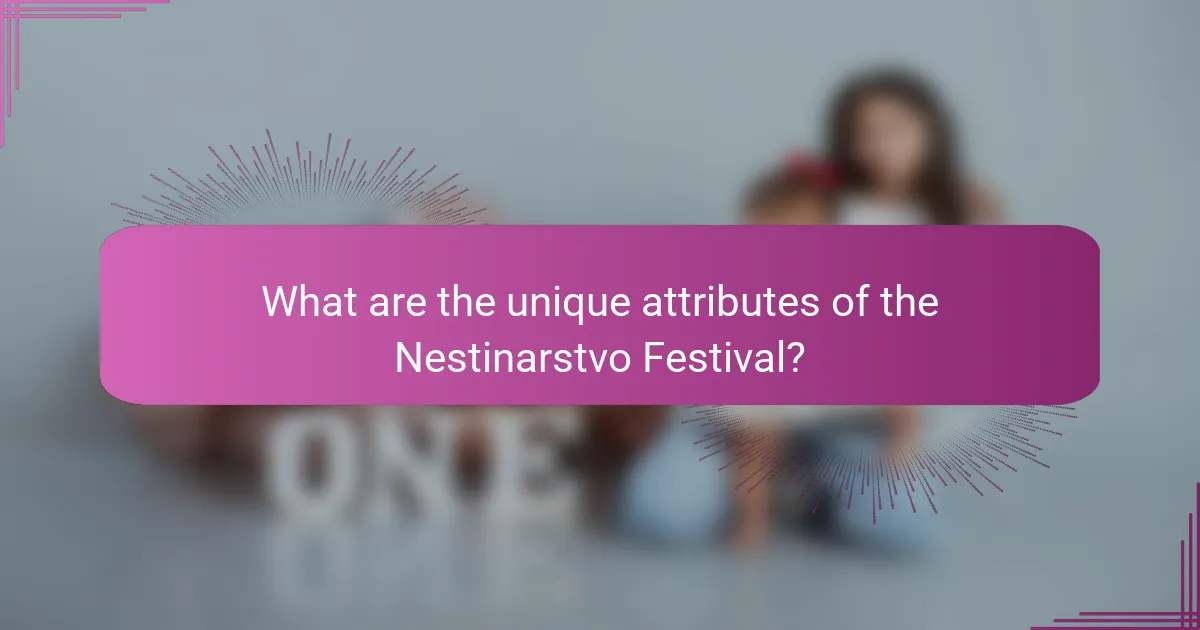
What are the unique attributes of the Nestinarstvo Festival?
The unique attributes of the Nestinarstvo Festival include its ancient origins, fire-walking rituals, and deep spiritual significance. This festival, celebrated in Bulgaria, showcases a blend of pagan traditions and Christian elements. Participants perform unique dances while walking on hot coals, symbolizing purification and connection to the divine. The event takes place annually, attracting both locals and tourists, and emphasizes community bonding and cultural heritage.
How does the festival incorporate elements of spirituality?
The Nestinarstvo Festival incorporates spirituality through its ancient fire-walking rituals and offerings to the saints. Participants engage in trance-like states, believed to connect them with divine forces. The festival embodies a blend of Christian and pagan traditions, fostering community bonds and spiritual healing. Rituals emphasize the importance of faith and collective identity, reinforcing the festival’s cultural significance.
What differentiates it from other cultural festivals?
The Nestinarstvo Festival is unique due to its blend of fire-walking rituals, ancient traditions, and deep spiritual significance. Unlike other cultural festivals, it emphasizes a connection between participants and the divine, showcasing a distinct form of community engagement. The festival’s roots trace back to pre-Christian times, making it a rare cultural event that preserves ancient practices. Additionally, the incorporation of music, dance, and traditional costumes further sets it apart, creating a vibrant atmosphere that celebrates heritage and identity.
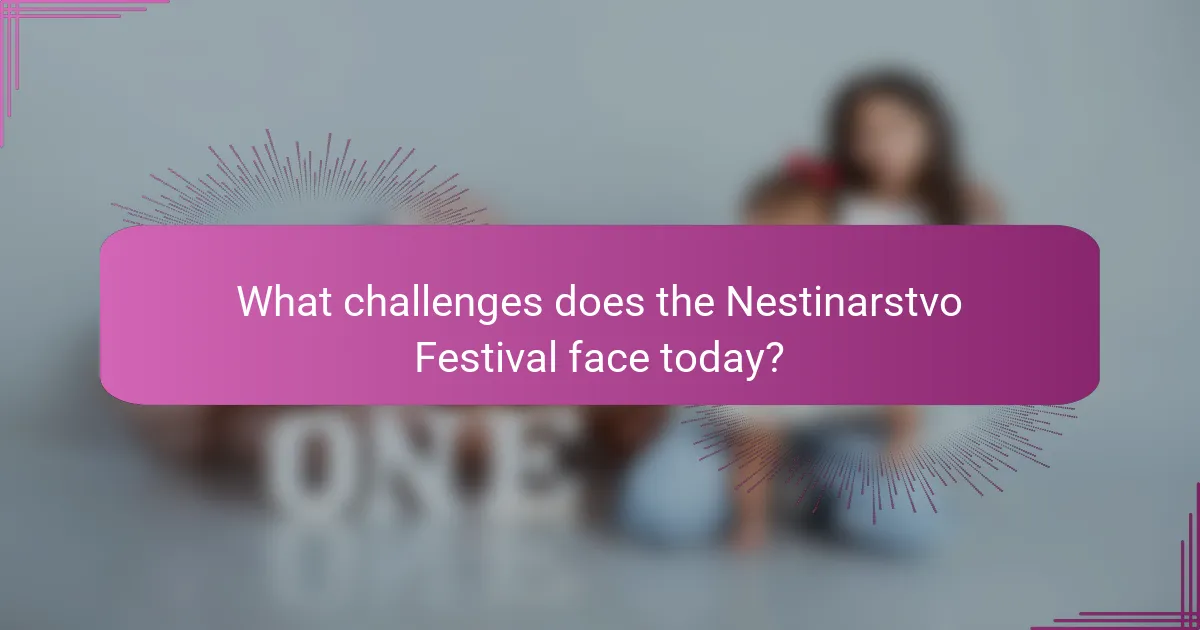
What challenges does the Nestinarstvo Festival face today?
The Nestinarstvo Festival faces challenges such as cultural preservation, modernization, and tourism impact. These factors threaten the authenticity of rituals and community engagement. Additionally, the festival struggles with funding and support for traditional practices. Climate change also poses risks to the event’s outdoor activities and natural environment.
How are modern influences impacting traditional practices?
Modern influences are reshaping traditional practices like the Nestinarstvo Festival by introducing new elements and altering perceptions. Globalization has led to increased tourism, which sometimes commercializes rituals. This commercialization can dilute the festival’s authentic cultural significance, as local communities adapt to meet the expectations of visitors. Additionally, social media spreads awareness but can also lead to misinterpretations of the festival’s true meaning. The balance between preserving tradition and embracing modernity continues to challenge the authenticity of Nestinarstvo practices.
What efforts are being made to preserve the festival?
Efforts to preserve the Nestinarstvo Festival focus on cultural education, community involvement, and governmental support. Local organizations promote awareness of the festival’s historical significance and rituals. Workshops and events engage younger generations, ensuring traditional practices continue. Additionally, the Bulgarian government recognizes the festival as part of the national cultural heritage, providing funding for preservation initiatives. These combined efforts aim to maintain the festival’s unique attributes while fostering community pride.

How can visitors respectfully engage with the Nestinarstvo Festival?
Visitors can respectfully engage with the Nestinarstvo Festival by observing rituals, participating in discussions, and respecting local customs. Attending with an open mind fosters appreciation for this unique cultural event. Avoid intrusive behavior and maintain a respectful distance during sacred ceremonies. Engaging with local artisans and learning about their crafts enhances the experience and supports the community.
What are the best practices for participation?
To participate in the Nestinarstvo Festival effectively, follow these best practices. Arrive early to secure a good viewing spot for the rituals. Wear comfortable clothing suitable for the weather, as the festival often involves outdoor activities. Engage respectfully with the local customs and traditions, as this enhances the cultural experience. Observe the fire-dancing rituals with reverence, as they hold deep spiritual significance. Lastly, consider participating in community activities to foster connections with locals and fellow attendees.
What common mistakes should be avoided by attendees?
Attendees should avoid common mistakes to fully appreciate the Nestinarstvo Festival. First, neglecting to research the festival’s history and rituals can lead to misunderstandings. Second, wearing inappropriate footwear can hinder participation in the traditional fire-dancing. Third, failing to respect local customs may offend participants. Lastly, not engaging with the community can diminish the experience and cultural significance of the event.
